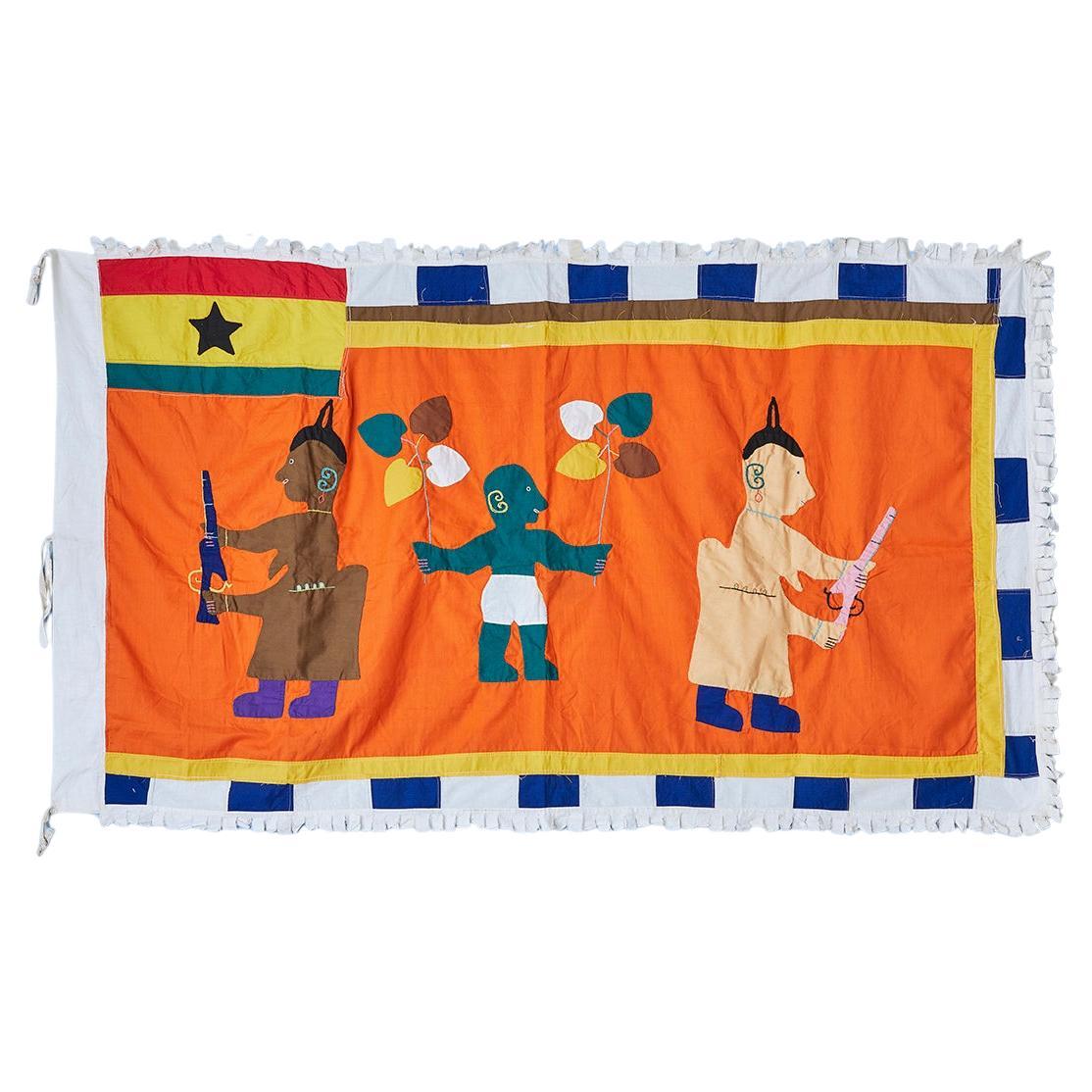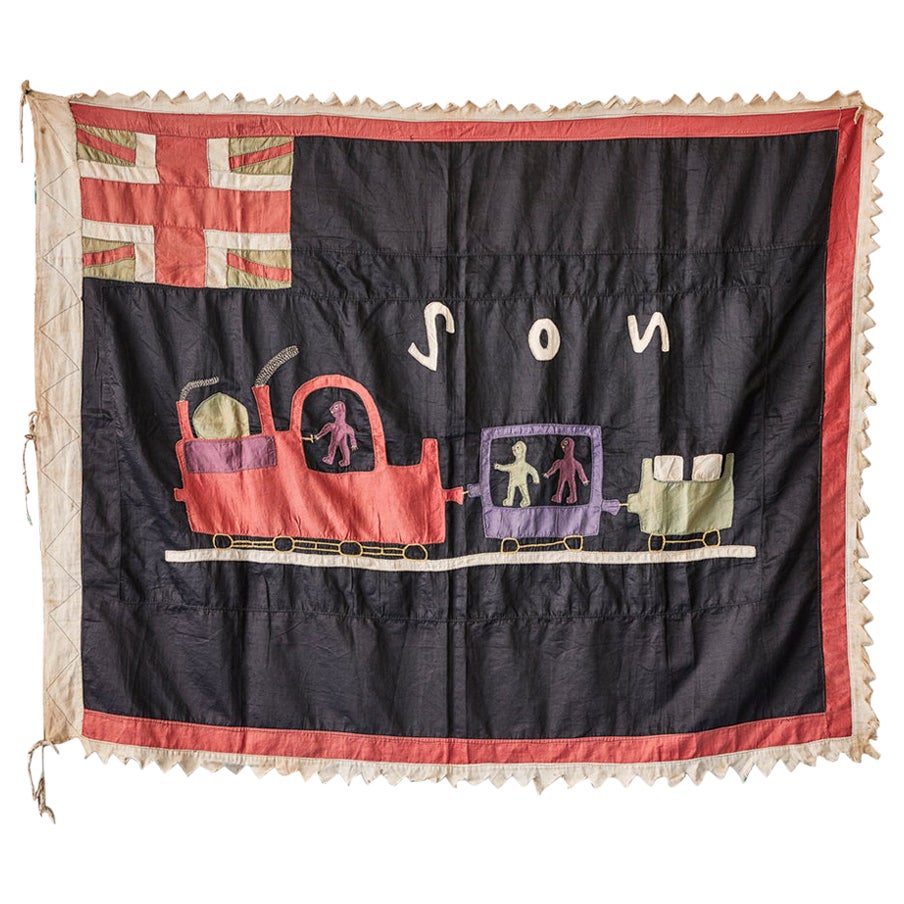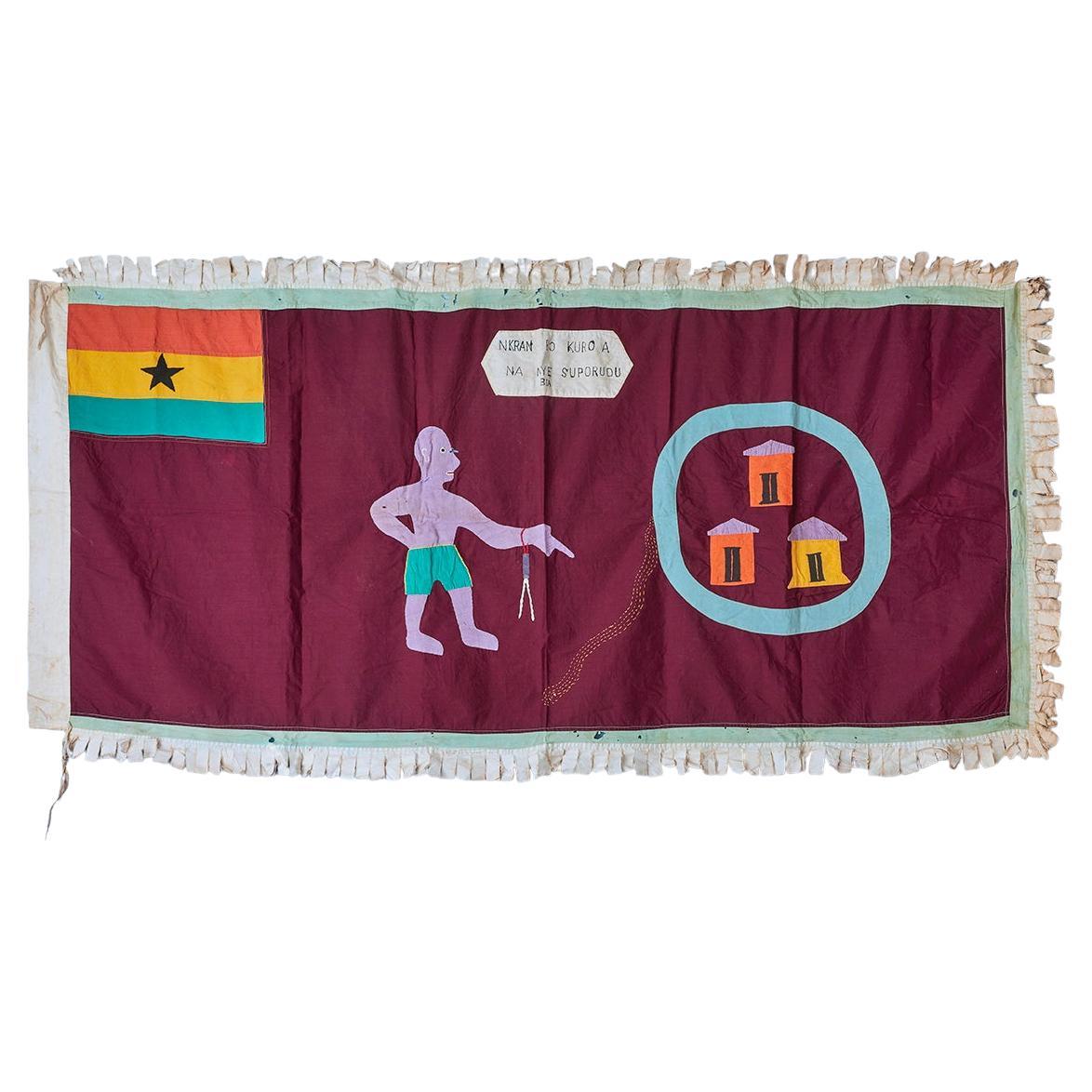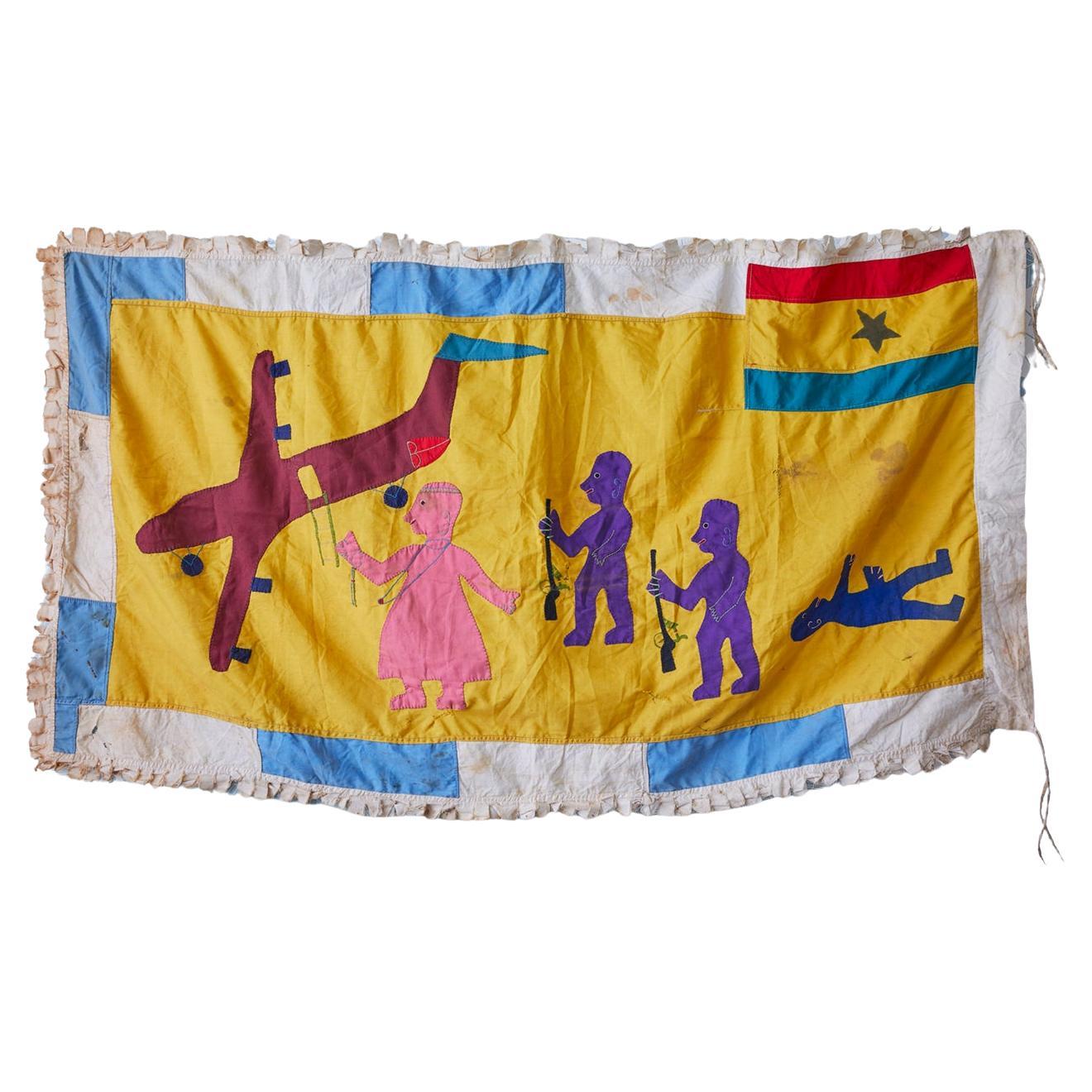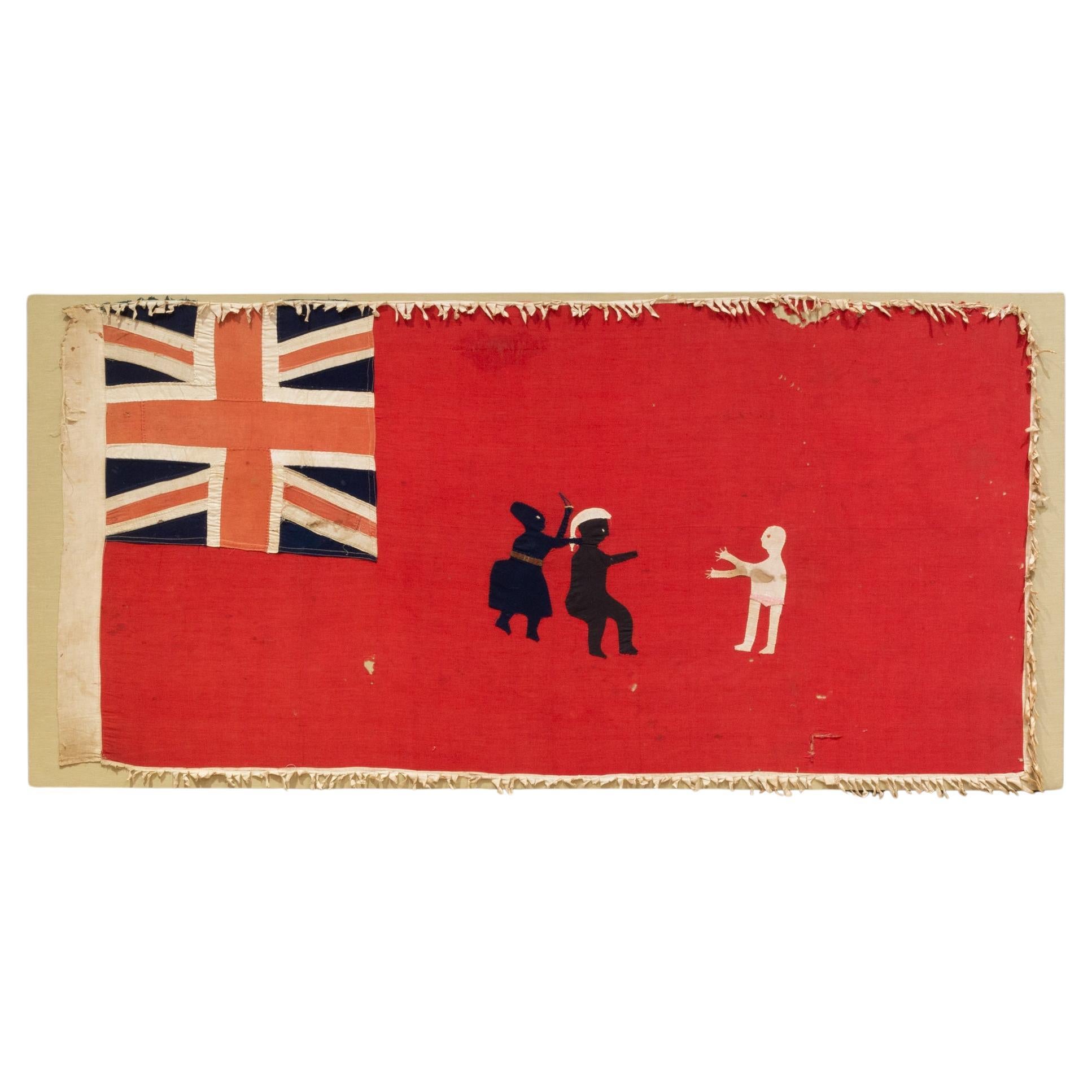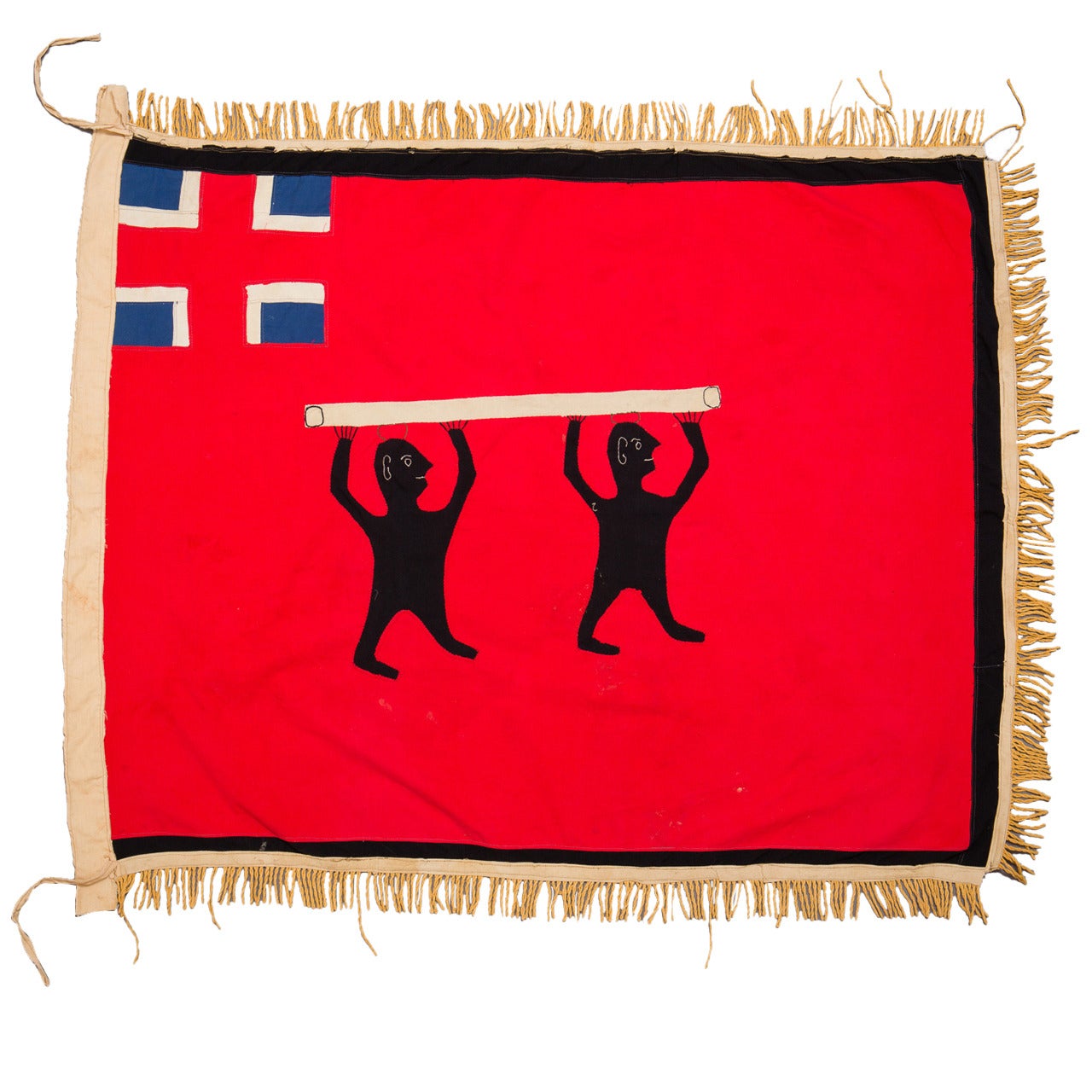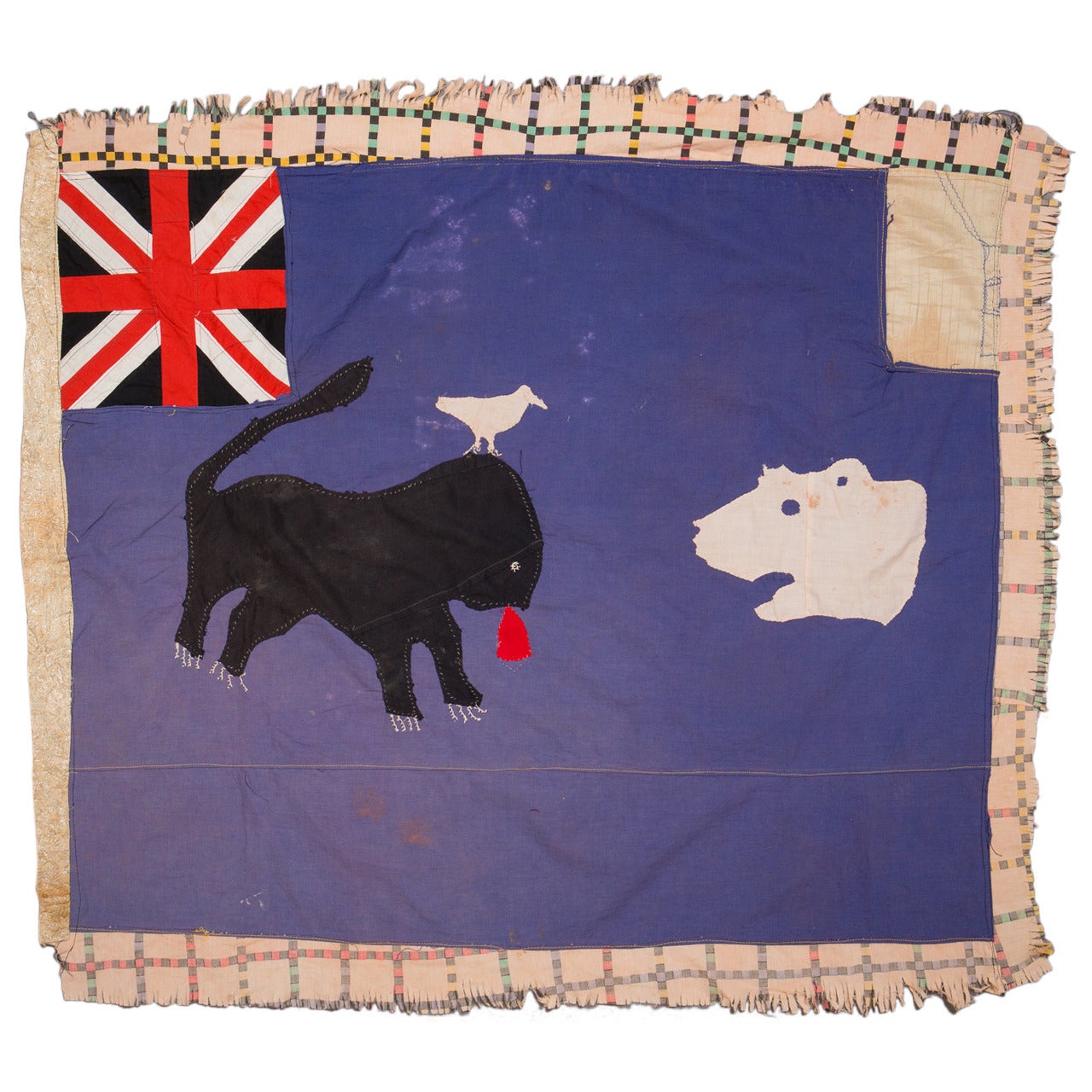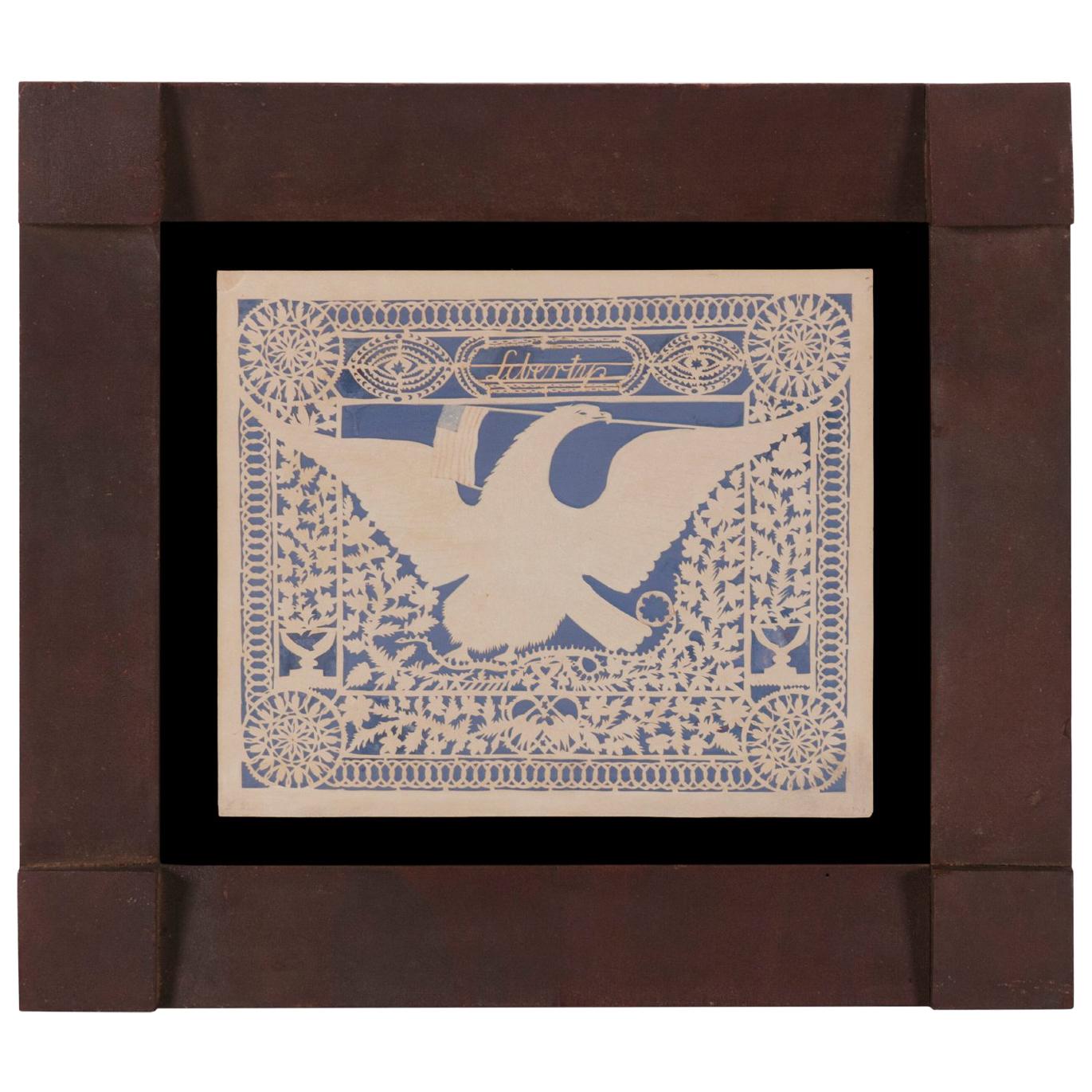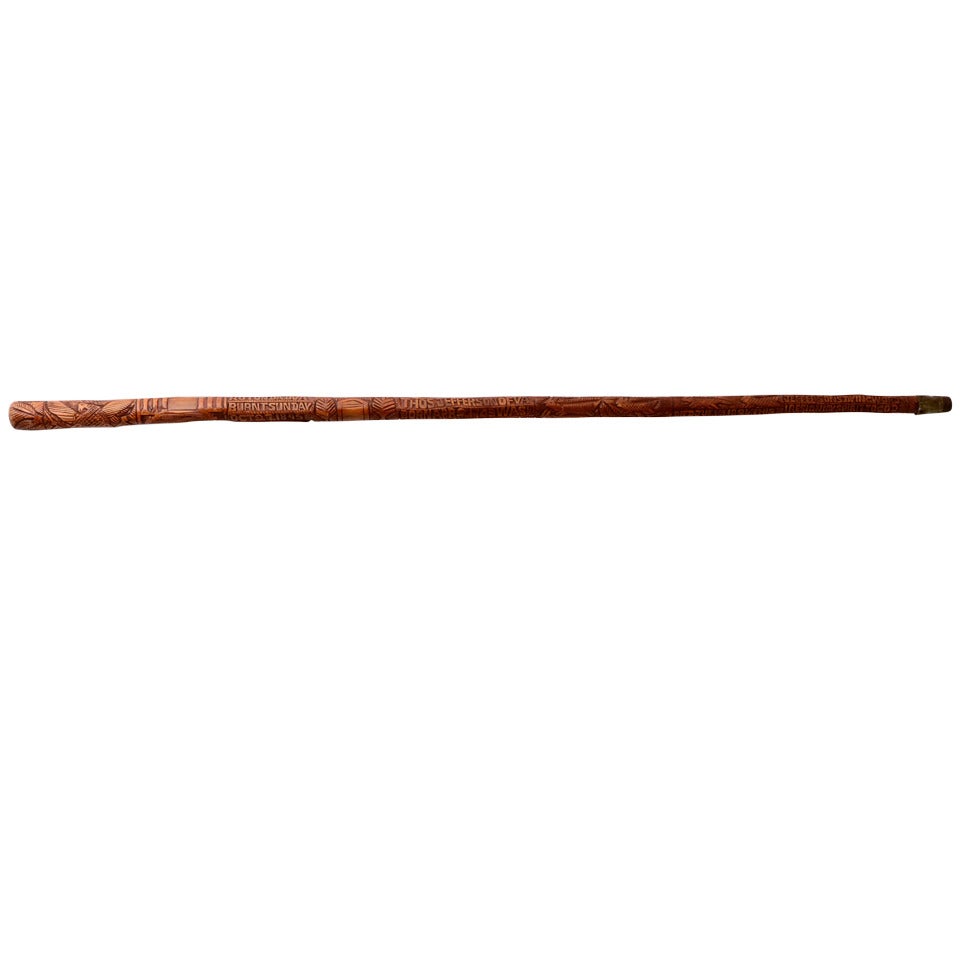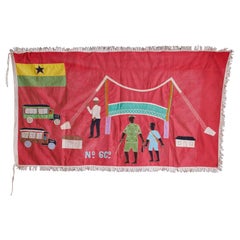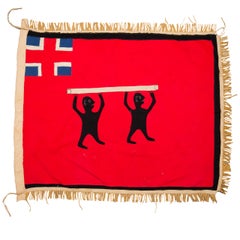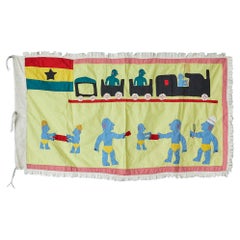
Vintage Asafo Flag in Yellow Appliqué Patterns by the Fante People, Ghana 1970s
View Similar Items
Want more images or videos?
Request additional images or videos from the seller
1 of 7
Vintage Asafo Flag in Yellow Appliqué Patterns by the Fante People, Ghana 1970s
About the Item
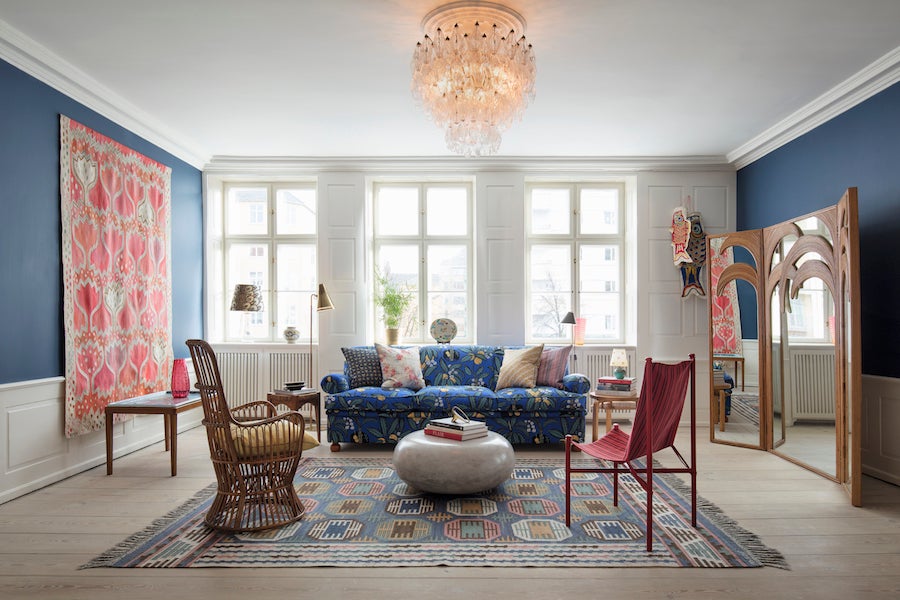
About the Seller
4.6
Vetted Seller
These experienced sellers undergo a comprehensive evaluation by our team of in-house experts.
Established in 2011
1stDibs seller since 2013
193 sales on 1stDibs
Typical response time: 2 hours
More From This SellerView All
- Vintage Fante People Asafo Flag in Orange Cotton Appliqué Patterns, Ghana, 1970sBy Fante PeopleLocated in Copenhagen K, DKGhana, 1970s Asafo flag in cotton applique patterns. Fante People. Asafo Flags are created by the Fante people of Ghana. The flags are visual representations of military organisat...Category
Vintage 1970s Ghanaian Political and Patriotic Memorabilia
MaterialsCotton
- Vintage Fante People Asafo Flag in Cotton Applique Patterns, Ghana, 1930-1950sBy Fante PeopleLocated in Copenhagen K, DKGhana, 1930s-1950s Asafo flag “The train is always ready to go” in cotton applique patters. Trains were a dramatic expression of power, regularity and reliability and as such were ...Category
Mid-20th Century Ghanaian Political and Patriotic Memorabilia
MaterialsCotton
- Vintage Asafo Flag in Pink Cotton Appliqué Pattern by Fante People, Ghana, 1960sBy Fante PeopleLocated in Copenhagen K, DKKwamina Amoaku Ghana, 1960s Asafo flag in cotton applique patterns. Fante People. Asafo Flags are created by the Fante people of Ghana. The flags are visual representations of mili...Category
Vintage 1960s Ghanaian Folk Art Political and Patriotic Memorabilia
MaterialsCotton
- Vintage Asafo Flag in Burgundy Appliqué Patterns by Fante People, Ghana, 1960sBy Fante PeopleLocated in Copenhagen K, DKGhana, 1960's Asafo flag in cotton applique patters. Fante People. Asafo Flags are created by the Fante people of Ghana. The flags are visual representations of military organisati...Category
Vintage 1960s Ghanaian More Folk Art
MaterialsCotton
- Vintage Fante People Asafo Flag in Yellow Cotton Appliqué Patterns, Ghana, 1980sLocated in Copenhagen K, DKGhana, 1980's Asafo flag in cotton applique patterns. Fante People. Asafo Flags are created by the Fante people of Ghana. The flags are visual representations of military organisat...Category
Vintage 1980s Ghanaian Folk Art Tribal Art
MaterialsCotton
- Vintage Kwamina Amoaku Asafo Flag in Cotton Appliqué Pattern, Ghana, 1960sLocated in Copenhagen K, DKKwamina Amoaku Ghana, 1960's Fante Asafo flag in cotton applique patterns. Fante People. Asafo Flags are created by the Fante people of Ghana. The flags are visual representations...Category
Vintage 1960s Ghanaian Folk Art Political and Patriotic Memorabilia
MaterialsCotton
You May Also Like
- Mounted Asafo Flag of Ghana c.1820-1920Located in San Francisco, CAABOUT Contact us for more shipping quotes: S16 Home San Francisco. An original Asafo flag depicting the Fante people of Ghana, Africa and the Union Jack of the United Kingdom. Mou...Category
Antique 19th Century Industrial Signs
MaterialsWood, Fabric
$2,595 Sale Price20% Off - 20th Century Fante Asafo Flag, GhanaLocated in New York, NYA large and graphically stunning Fante asafo flag. Fante flags represent the merger of two cultural traditions, the Akan tradition of combining pro...Category
Mid-20th Century Ghanaian Decorative Art
MaterialsFabric
- Mid-20th Century Fante Asafo Flag, GhanaLocated in New York, NYA large and graphically stunning asafo flag. Fante flags represent the merger of two cultural traditions, the Akan tradition of combining proverbs with ...Category
Mid-20th Century Ghanaian Tribal Art
- Patriotic Scherenschnitte In the Style Often Attributed to Isaac StiehlyLocated in York County, PAEXCEPTIONAL PATRIOTIC SCHERENSCHNITTE (PAPER CUTTING), IN THE STYLE OFTEN ATTRIBUTED TO ISAAC STIEHLY, ENTITLED “LIBERTY,” WITH IMAGERY THAT INCLUDES AN AMERICAN EAGLE WITH A 14 STAR, 14 STRIPE FLAG IN ITS BEAK, A RATTLESNAKE, LOVE BIRDS, AND EAGLES ON URNS, CA 1830-1850 This exceptional patriotic scherenschnitte was executed in the style often attributed to Pennsylvania German minister Isaac Stiehly (1800-1869). Scholars now agree that one or more artists, working in New York, were producing their own work in a very similar style. Several examples are known that bear the names of New York and/or New Jersey residents, while two, in particular, include text that celebrates the 1844 New York mayoral election victory of publishing magnate James Harper [founder of what is now Harper Collins], who ran on a ticket sponsored by the American Republican Party, a nativist organization concerned with the loss of American jobs to Irish immigrants. Note the quality of the cutwork on this example, the centerpiece of which is a large American eagle, gripping a coiled rattlesnake and holding an American flag in its beak. Above, in a lozenge-shaped medallion, the word "Liberty" is executed in large script. To the left and right of this are elaborately decorated ovals, and anchoring each corner of the work are snowflake-like medallions. To each side of the eagle, and below, is a plethora of flora and fauna, the outermost pillars of which are supported by two urns, decorated with eagles. At the bottom center is a diamond within a heart, with two doves, one of which is offering the other a leaf. Above this there are appear to be crude representations of a gnome and a fairy flanking and urn decorated with another heart, from which grow the vines in the center window. Interlocking rings decorate the border, probably to represent marriage, and it can logically be presumed that the scherenschnitte was a wedding gift. It is of interest to note that the flag displays both 14 stars and 14 stripes. Although the reason for the use of this count is unknown, on the surface it does appear to be intentional. Other known patriotic scherenschnitte display flags with various star and stripe counts. Of those I have personally owned, the one bore 14 stars and 13 stripes, another 11 stars and 13 stripes, another displayed two flags, including a 12 star flag with 14 stripes and a 14 star jack (a blue naval flag with stars but no stripes), and another, also with 2 flags, displayed a 20 star flag...Category
Antique Mid-19th Century American Political and Patriotic Memorabilia
MaterialsPaper
Price Upon Request - Thomas Jefferson Crannock Carved CaneLocated in Darnestown, MDUnique carved cane that chronicles the life and achievements of Thomas Jefferson. Among the carved words are "Thos. Jefferson of Va Born Apr 2,1743 Wa...Category
Antique 19th Century American Country Political and Patriotic Memorabilia
MaterialsWood
- 36 Star Antique Flag, Nevada Statehood, with Stars in the "Great Star" PatternLocated in York County, PA36 STARS IN THE "GREAT STAR" OR "GREAT LUMINARY" PATTERN, ON A MERINO WOOL FLAG OF THE CIVIL WAR ERA WITH BEAUTIFUL SCARLET AND ROYAL BLUE COLOR AND WITH ITS CANTON RESTING ON THE "WAR STRIPE," REFLECTS NEVADA STATEHOOD, 1864-67 36 star antique American flag of the Civil War era, with some rare, desirable, and beautiful features. The most obvious of these is the configuration of the stars. These are arranged in what is known as the “Great Star” or "Great Luminary" pattern, a star made out of stars, which is one of the most graphic and desired geometric designs among flag enthusiasts. Nevada entered the Union as the 36th state on October 31st, Halloween, in 1864. Ushered in by Abraham Lincoln just eight days before the presidential election that resulted in his second term, the territory’s wealth in silver was attractive to a nation struggling with the debts of war and so increased support for the Republican ticket. The 36th star was officially added on July 4th, 1865, but since the flag makers generally cared very little about official star counts, the production of 36 star flags began much earlier. The makers of printed flags are known to have begun adding the 36th star as early as July of 1864, several months before the addition of Nevada actually occurred. This was a common practice during the late 19th century and is reflective of both the nation's desire for Westward Expansion and the hope of flag-makers to bring new star counts to market before their competitors. The 36 star flag was officially replaced by the 37 star flag in 1867, following the addition of Nebraska. Great Stars come in many forms. This particular example has a single center star, surrounded by a pentagon of 5 stars, set inside its star-shaped perimeter. Note how the Great Star is positioned with two points up instead of one and so is effectively upside-down with respect to modern convention. Unlike the current flag, versions of the Stars & Stripes made during the 19th century and prior often displayed stars that were varied or completely random in their rotation on a vertical axis. Note how the feature draws attention and is unusual to the eye, in addition to being visually appealing. Another interesting trait can be seen in the fact that the canton rests on a red stripe. When this scarce condition occurs, some flag historians have referred to it as the “blood stripe” or the “war stripe”, suggesting the flag was constructed in this manner when the nation was at war. In actuality, the placement probably occurred more often by accident. Not everyone knew where the canton was traditionally positioned, and because there was no official specification until 1912, there was no official placement. Whatever the case may be with regarding the reason, the war stripe feature is highly coveted by collectors. The stars of the flag are hand-sewn, made of cotton, and are double-appliquéd (applied to both sides). The canton and stripes of the flag are made of fine merino wool. These are beautiful, luxurious fabrics with strong royal blue and scarlet color. Every seam was joined with a row of hand-stitching, then finished with a row of treadle stitching. Instead of employing the selvage edge of the red fabric, the top and bottom edges of the flag were turned under and seamed by hand and the fly end was seamed in the same fashion. There is a narrow binding along the hoist, treadle-sewn and made of cotton. Along this five cotton tabs were affixed, each with a tiny brass ring, which suggests that the flag was probably affixed to a wooden staff with twine or ribbon and hand-carried. The name of "Stow" is inscribed along the hoist. This would be the name of a former owner. In the field of early American flags...Category
Antique 1860s American Political and Patriotic Memorabilia
MaterialsWool
